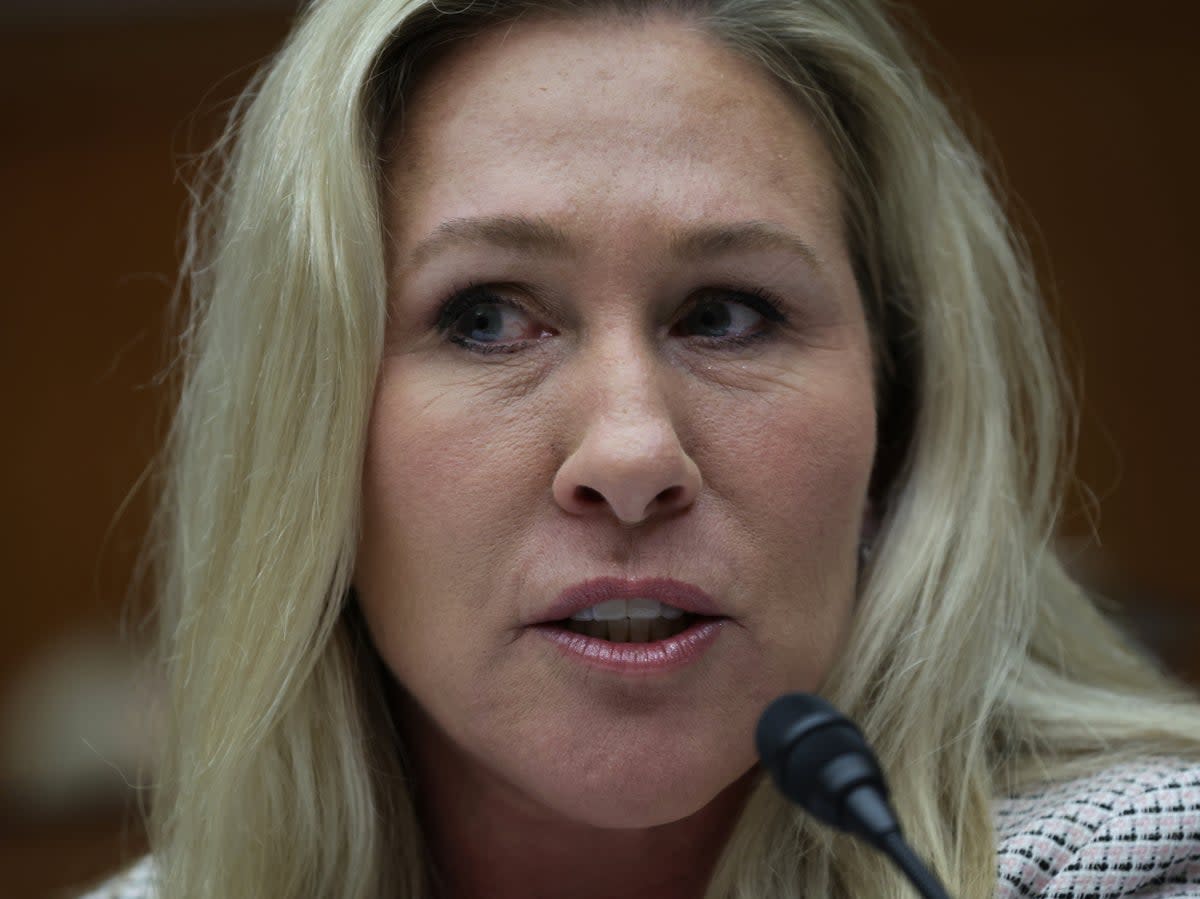Voices: Why Marjorie Taylor Greene’s ‘American Divorce’ would be more like America’s Brexit

Forgive me, for I am about to do something foolish: For a moment, I’ll take Marjorie Taylor Greene seriously.
I’m referring to the right-wing Georgia congresswoman’s rumination about American Divorce, Greene’s Big Idea that blue states are so darn hard on the red-state mindset that Real Americans be fixin’ to secede! Real Americans, in other words, must leave America to show what Real Americans are.
Welcome to Marge-istan, population one.
“We need a national divorce,” Greene said on Twitter, before expanding on the idea on Sean Hannity’s Fox News show, despite almost taking it back. “We need to separate by red states and blue states and shrink the federal government.”
Shall we make the economics of this simple?
What Greene proposes is an American Brexit. As disastrous as Brexit – the United Kingdom’s withdrawal from the European Union and its collection of free trade, immigration and other agreements – has been, American Brexit would be worse.
Let’s talk about American Brexit economically.
Investment in Britain’s economy dropped 30 percent after Brexit, says the Tony Blair Institute for Global Change, doubling forecasts. Brexit has cost 330,000 UK jobs – in the US economy, that projects to about 1.6 million. Overall, the UK has had Europe’s weakest major economy since 2019 – and is now doing nearly as badly as Russia, reeling from sanctions and war.
It would be much worse than that as red states form the new territory Marjorie Taylor Greene is pitching.
Let’s begin with the simplest observation: Counties that voted for President Joe Biden generate 70 percent of gross domestic product.
Fourteen of the poorest 15 states voted Republican in 2020. All 12 richest states chose Biden. Only four red states have median household incomes in the top half of the 50 states.
The nine red states that seceded in 1861 get, on average, 42 percent of their budgets from Washington, according to SmartAsset. Mostly that buys health care – 70 percent of federally funded state spending in Tennessee goes towards health and social services. So much for shrinking DC being good (or survivable) for Marge-istan.
State residents are even more Washington-dependent than state governments. Another 1.4 million Tennesseans use Medicare, which doesn’t pass through the state’s budget, and 1.2 million get Social Security pensions. Every southern red state besides Texas has more Social Security dependents than the national average.
You’re on your own as Washington-dependent hospitals – giant employers in small towns, in state economies much more dependent on health care than the US average – go broke. The EU couldn’t bankrupt Britain’s National Health Service.
Also, the South’s privately generated wealth depends on being in the US – able, under the Constitution, to trade freely within America. Much as the UK did with Europe. Until Brexit.
Of Georgia’s 10 richest billionaires, for example, four come from Home Depot or Chick-Fil-A, which have stores all over. Some of Arkansas’ richest folks stem from global enterprises like Wal-Mart and Tyson Foods. And so on.
Next, consider where money comes from within red states. From blue cities. If we’re really talking about secession or something like it, there’s no reason Greene should assume these cities are up for the cause. Consider Tennessee without Nashville. Think hipster chefs and musicians moving there signed up for Greene’s side of the culture war? What is Texas without Houston, Dallas, San Antonio and Austin, population 6 million? Marge-istan would have aspects of East Germany - conceived and dedicated largely to stamping out free thinking about race, gender and other things that make Greene see red - but it would be dotted with West Berlins firmly committed to modernity.
The list of purely economic levers True-Blue America would have over Marge-istan is long. Companies can leave, or impose conditions for staying. So can people.
Take 2015’s standoff between Indiana and Salesforce, which has a subsidiary in Indianapolis, after the state passed an anti-gay rights law. San Francisco-based Salesforce barred employees from traveling to Indiana, and threatened to cancel events there. The law was changed literally a week later.
Most wittily, consider Charlotte, North Carolina. The Queen City’s best-known company headquarters is Bank of America. Shall we take odds on whether it would stay after secession, or choose, you know, America?
So, don’t take Greene either literally or seriously. Marge-istan can’t make it without Washington, without its own largest cities, its markets in blue states, or its largest companies and highest-value-added workers. None would salute Marge-istan’s flag for a minute.
Marge-istan’s collapse could happen as fast as the US Congress wishes. Health care crumbles the moment DC pulls the money. Trade tanks if Congress exercises its authority to regulate it (as the ex-Confederacy’s 18-4 Republican contingent leaves the Senate, gridlock ends). Or Marge-istan could crumble gradually, as ponytailed banjo pickers who gravitated towards Nashville for the live music and techies who live Austin for cheap housing learn Chicago is better for both.
In 1861, rebels were subjugated by arms. Today, lawyers – and the market power of queer chefs and megabanks – would do. Red and blue both know green really rules. And we don’t mean Marjorie Taylor Greene.

